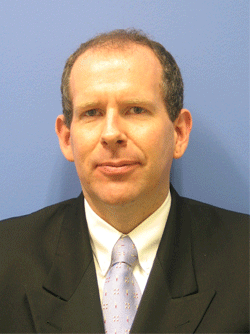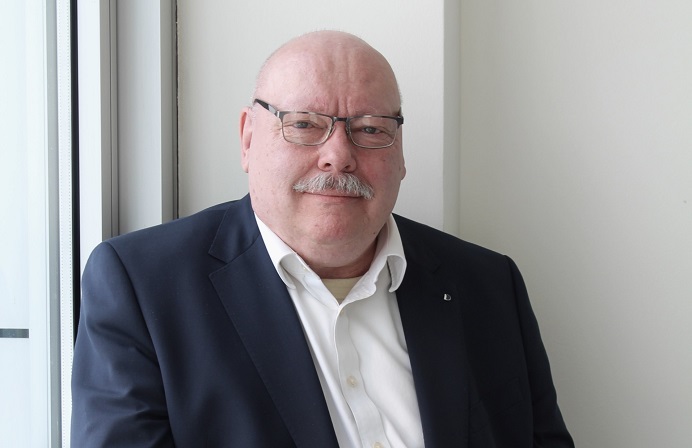
Wong: What technology initiatives can we expect to see from Barclays Capital in Singapore in the next 12 to 18 months?
Uloth: Technology changes within the data centre space have been evolving rapidly over the last few years and I expect this to continue. With new data centres we will review best practices and will implement reliable technologies which help us to run more efficient data centres.
With our recently established data centres in Singapore and Hong Kong we have implemented all current best practices which focus on improving the cooling and space usage of the data centres. For instance, cold aisle containment, separate dehumidification systems, variable speed fans in CRACs (Computer Room Air Conditioning), sizing of UPS systems so they perform in their sweet spots, PIR lighting (Passive Infrared), etc.
With technology we have used virtualisation, obsolescence, technology refresh to ‘create’ additional capacity within our existing data centres. There remains ongoing opportunity in this space and we evolve our reporting metrics to make the business focus on those areas where we have under utilised systems.
Over the next 18 months we will continue to focus on efficiency through these areas. However, I see a number of opportunities increasing the efficiency of our data centres.
We currently run tiered networks in the data centre from a central location through a MDF (main distribution frame). With emerging network technologies I believe our designs will move toward ‘top of rack’ network distribution. This should reduce the size of the network footprint and reduce the amount of copper in our data centres.
Barclays have implemented, very successfully, cold aisle contained data centres in Jakarta, Hong Kong and Singapore in 2010. This has been an iterative evolvement of the design which focuses on how we improve cooling efficiency. We need to be cautious as we change our designs, however I think the end state of cold aisle containment design will be radically different from the design of data centres today.
I can see a time when our new data centre designs are all cold aisle contained, on the slab with no raised floor.
Power and data cable would run in troughs above the racks and fire suppression would be zoned to the rack and potentially be pre-action rather than gas suppression.
Our strategy on data centre locations and quality is to have a pair of Tier ‘III+’ data centres in our major hubs and allow the business and technology to mix Production, DR, UAT in these sites. I can see an opportunity to zone lower tiered space for less critical systems.
We need to proceed cautiously in small steps, towards these goals, when opportunities present themselves. We hope, in the next 18 months, to have an opportunity to test some of these changes on new data centres across the region.
Wong: Barclays is leading the charge in saving energy and reducing costs with innovative approaches to technology. Can you describe the role of data centres in this strategy; and how is success being measured?
Uloth: Barclays is committed to reducing its carbon footprint. This year we will spend significantly over 100 million pounds on electricity powering all our buildings and data centres. Of this about one quarter is being spent on power for the data centres so there is a tremendous opportunity to create real value both to the business and to the community in reducing our carbon footprint.
We have been working on this for the last few years and the evolving strategy is comprehensive. That is to say, we are examining how power traverses the data centres and where we can make changes in efficiency, focusing on the larger opportunities first.
This can be nicely cut into two portioms: our existing data centres and our new data centres.
In our existing data centres we have looked at containment, end of aisle containment, improvement of controls, improvement of measurement devices, replacement of systems, consolidation of load on CRACs and UPS, space management, PIR lighting etc. Our ability to measure success is hampered by the majority of APAC data centres being in co-location facilities where the power and cooling is shared between clients.
In our new data centres we are looking at all design elements and setting ourselves design goals for PUE (Power Usage Effectiveness) at various design loads. This is driving the selection of mechanical and electrical components for their efficiency at our design loads and the overall design of the data centres.
Wong: What do you foresee as the next generation of sustainability within the Barclays Capital IT quarters?
Uloth: Barclays has made public commitment to their shareholders on their carbon footprint reductions and the EPA (Environmental Protection Authority) in the US, EU and the UK are moving rapidly towards regulation. I believe that Barclays will continue to look towards making our data centres as efficient as possible whilst complying with any regulations.
Wong: How will virtualisation and cloud computing re-architect data centres; and why?
Uloth: There are a large number of regulators which govern Investment Banking. These regulators protect the public interest and controls are needed to make sure data is secure and available appropriately. I believe it will be a long time before we are in a position to use the public cloud infrastructure.
The public cloud infrastructure gets its data centre efficiencies from massive scale. Within the investment bank we have the nucleus of private clouds in our High Performance Computer farms and Virtualisation servers. I can see these increasingly becomming the platform of choice for deployment of systems, and it is not a huge step towards a private cloud.
Once in a cloud, as everyone gains comfort in the security controls for data I believe that one day we will move more into the Public Cloud and downsize our internal data centre footprints. This may be a pipedream and it is certainly a long way off.
Wong: In your view, which countries in wider Asia are taking the lead in implementing innovative, business-enabled technologies; and why?
Uloth: I have been fortunate to see business and collocation data centres in most countries in Asia and I don’t see that the technology or designs being implemented are a function of the countries’ leadership in technology.
Therefore I can not point to any country as taking a lead. The better data centres across the region are a function of:
• when they were built, with more recent ones utilising best practices;
• great design from experienced data centre designers, and;
• committed investment in high quality infrastructure.
Wong: How far in advance do you chart your regional IT strategy; and how flexible is it to market changes?
Uloth: In the data centre space our strategy has been consistent for the last four years and we do not foresee a change. We focus on delivering data centre capacity efficiently; two data centres in major hubs; consolidation where permitted and economically appropriate into fewer larger sites; and we focus on technology solutions over bricks and mortar.
However, within this strategy the business has the ability to change focus very quickly and we need to react to these changes. The acquisition of Lehman’s in the US saw the business decide to invest in building out the Asia footprint which resulted in huge increase in servers being deployed across Asia in 6 month period. This demand resulted in capacity programmes being implemented in Tokyo and Hong Kong which delivered to the business in the required timelines.
These are challenges that make the role exciting.
Wong: What IT skills are in demand right now and how do you see these changing in the next three years?
Uloth: The traditional data centre staffing model will continue to evolve. In the past we saw data centre operations, main frame operations or printer operations people move into the data centre management space. Most of these teams are now small and want provision for the next generation of data centre staff. With the data centre focus on power and efficiency I believe that we will see more staff in the data centre space being recruited from the Mechanical & Electrical engineering fields.
Wong: Every leader, particularly at your level, has a legacy they wish to be remembered for. What is yours?
Uloth: I am fortunate to have hired and worked with some great people. My style as a manager is to coach, and be supportive wherever possible. The legacy I would like to leave is the people I have helped, influenced and assisted: to see them grow into competent and successful managers.





